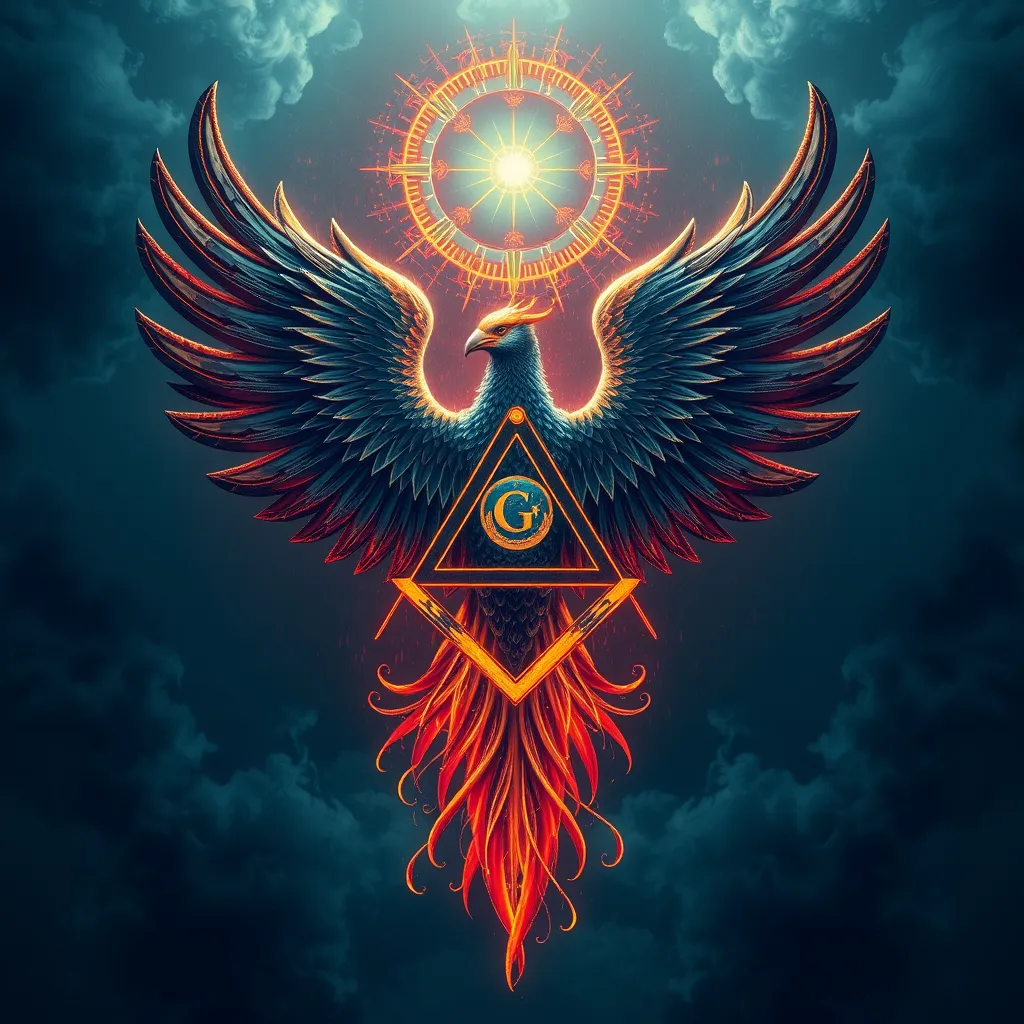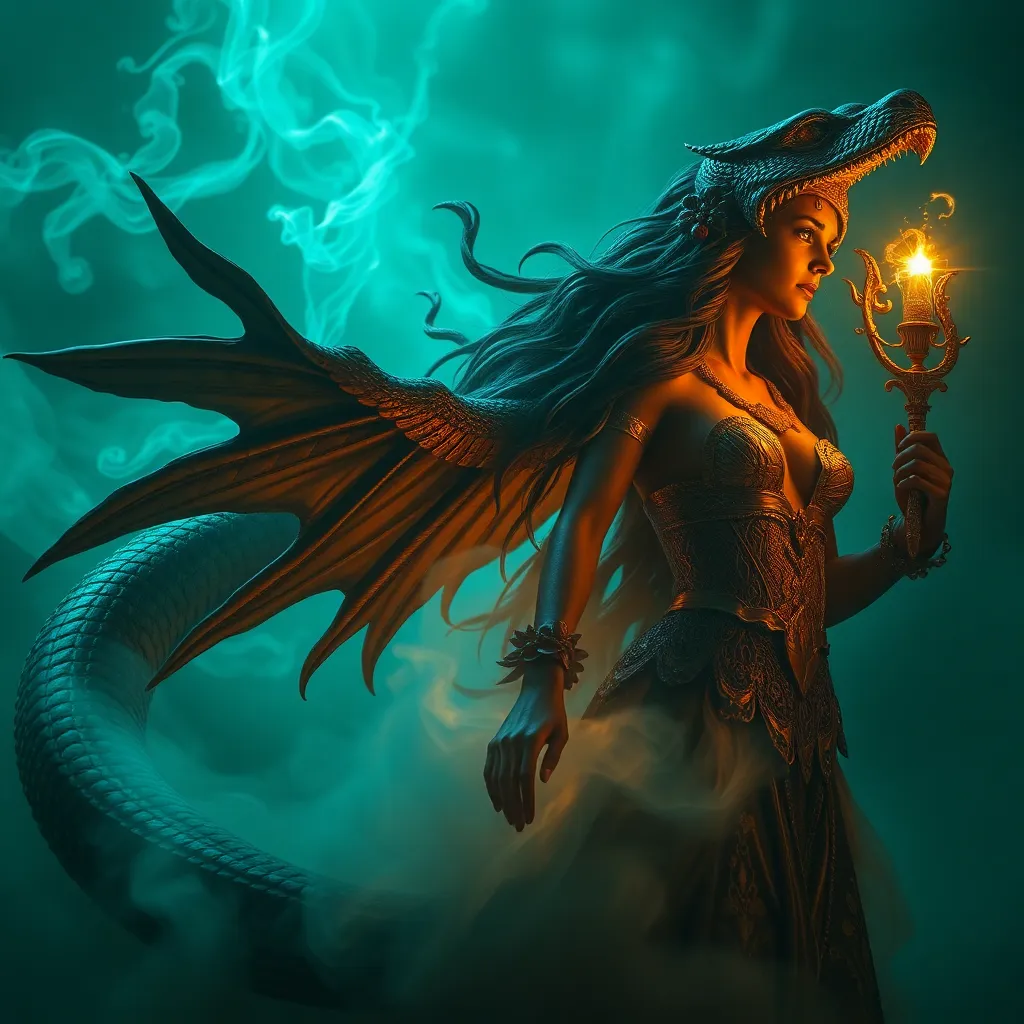The Phoenix in Freemasonry: The Symbol of Rebirth and the Quest for Enlightenment
I. Introduction
Freemasonry is a fraternal organization that dates back centuries, characterized by its unique symbols, rituals, and philosophies. Among the many symbols that hold meaning within Masonic teachings, the Phoenix stands out as a powerful emblem of rebirth and transformation. This article aims to explore the significance of the Phoenix in Masonic philosophy, delving into its mythological origins, its role in rituals, and its representation of the quest for enlightenment.
II. The Mythological Origins of the Phoenix
A. Historical background of the Phoenix myth
The Phoenix is a legendary bird that appears in various mythologies across cultures, often associated with fire and renewal. According to ancient myths, when the Phoenix feels its end approaching, it builds a nest of aromatic wood and sets it ablaze. From the ashes of its own destruction, a new Phoenix arises, symbolizing the cycle of life, death, and rebirth.
B. Symbolism of rebirth and immortality
The Phoenix embodies the concept of immortality, as it is continually reborn from its ashes. This cycle represents not only physical resurrection but also spiritual renewal, making the Phoenix a potent symbol of hope and resilience.
C. Cultural representations of the Phoenix across civilizations
- Ancient Egypt: The Bennu bird, often associated with the sun god Ra, is a precursor to the Phoenix myth and symbolizes rebirth and the flooding of the Nile.
- Greek mythology: The Greeks described the Phoenix as a bird that lived for 500 years before it was consumed by flames and resurrected from its ashes.
- Chinese mythology: The Fenghuang, or Chinese Phoenix, symbolizes high virtue and grace, often associated with the empress and the idea of renewal.
III. The Phoenix in Masonic Rituals
A. The role of the Phoenix in Masonic ceremonies
In Freemasonry, the Phoenix plays a pivotal role in various rituals, often symbolizing the initiation process where candidates undergo a transformation. The ritualistic death and rebirth reflect the Masonic journey of self-improvement and enlightenment.
B. Interpretation of the Phoenix in various degrees of Masonry
Different degrees of Masonry may interpret the Phoenix uniquely, yet all emphasize its significance as a symbol of personal growth and enlightenment. The Phoenix often represents a member’s commitment to rising above challenges and embracing change.
C. Analysis of Masonic texts that reference the Phoenix
Numerous Masonic texts and teachings reference the Phoenix, depicting it as a metaphor for the moral and ethical rebirth of the Mason. These texts encourage members to reflect on their personal journeys and the transformative power of knowledge and experience.
IV. Symbolic Meaning of the Phoenix in Freemasonry
A. The concept of death and rebirth in Masonic teachings
Central to Masonic philosophy is the idea that death is not the end, but a necessary transition to a new beginning. This aligns with the Phoenix’s symbolism, encouraging Masons to view challenges and failures as opportunities for growth.
B. The Phoenix as a representation of personal transformation
The Phoenix serves as a reminder of the potential for personal transformation within each Mason. It encourages members to shed old habits, beliefs, and limitations, embracing a renewed sense of purpose and identity.
C. The quest for enlightenment through the cycle of renewal
As Masons engage in lifelong learning and self-reflection, the Phoenix symbolizes the continuous quest for enlightenment. This journey involves a cyclical process of learning, unlearning, and ultimately transforming oneself.
V. The Phoenix and the Pursuit of Knowledge
A. The association of the Phoenix with enlightenment
The Phoenix is intrinsically linked to the pursuit of knowledge and enlightenment within Freemasonry. Just as the Phoenix rises from the ashes, Masons seek to elevate their understanding and wisdom through education and self-discovery.
B. How the Phoenix symbolizes the journey towards self-improvement
Self-improvement is a cornerstone of Masonic teachings, and the Phoenix epitomizes this journey. Masons are encouraged to reflect on their experiences, learn from their mistakes, and strive for higher ideals, much like the Phoenix’s rebirth.
C. The role of education and wisdom in Masonic philosophy
Education and wisdom are vital in Freemasonry, fostering a community of enlightened individuals. The Phoenix symbolizes the ongoing pursuit of these qualities, reinforcing the importance of knowledge in transcending limitations and achieving personal growth.
VI. The Phoenix and Community in Freemasonry
A. The collective journey of Masons towards renewal
The journey of a Mason is not solitary; it is shared within the community. The Phoenix represents the collective experience of Masons supporting one another through trials, fostering an environment of renewal and growth.
B. The Phoenix as a symbol of unity and support within the Masonic community
As Masons rise together, the Phoenix symbolizes the unity and brotherhood that underpin Masonic values. This sense of belonging encourages members to uplift each other and work towards common goals.
C. Examples of community projects that embody the Phoenix’s spirit
- Charity initiatives: Many Masonic lodges engage in charitable work, symbolizing the rebirth of hope and support for those in need.
- Mentorship programs: Experienced Masons often guide newcomers, reflecting the Phoenix’s mentorship role in fostering growth and renewal.
- Community education: Workshops and seminars organized by Masons aim to enlighten the public, promoting the cycle of knowledge and transformation.
VII. Modern Interpretations of the Phoenix in Freemasonry
A. Contemporary relevance of the Phoenix symbol
In today’s world, the Phoenix remains a relevant symbol in Freemasonry, resonating with modern Masons who seek to navigate challenges with resilience and hope. Its message of rebirth aligns with contemporary values of personal and societal transformation.
B. How modern Masons relate to the Phoenix concept
Modern Masons often interpret the Phoenix as a call to adapt and evolve in a rapidly changing society. The symbol encourages them to embrace innovation while staying true to Masonic principles.
C. The Phoenix in popular culture and its influence on Masonic identity
The Phoenix has transcended its mythological roots, appearing in literature, film, and art as a powerful symbol of resilience. This cultural relevance reinforces its position within Masonic identity, connecting Masons to a broader narrative of transformation and hope.
VIII. Conclusion
In conclusion, the Phoenix holds profound significance in Freemasonry, representing rebirth, enlightenment, and the transformative journey of its members. Its enduring legacy serves as a powerful reminder of the importance of embracing change and striving for personal and collective growth. As Masons continue their journey, the Phoenix stands as a symbol of hope, encouraging them to rise from the ashes of their challenges and pursue a path of enlightenment and renewal.



